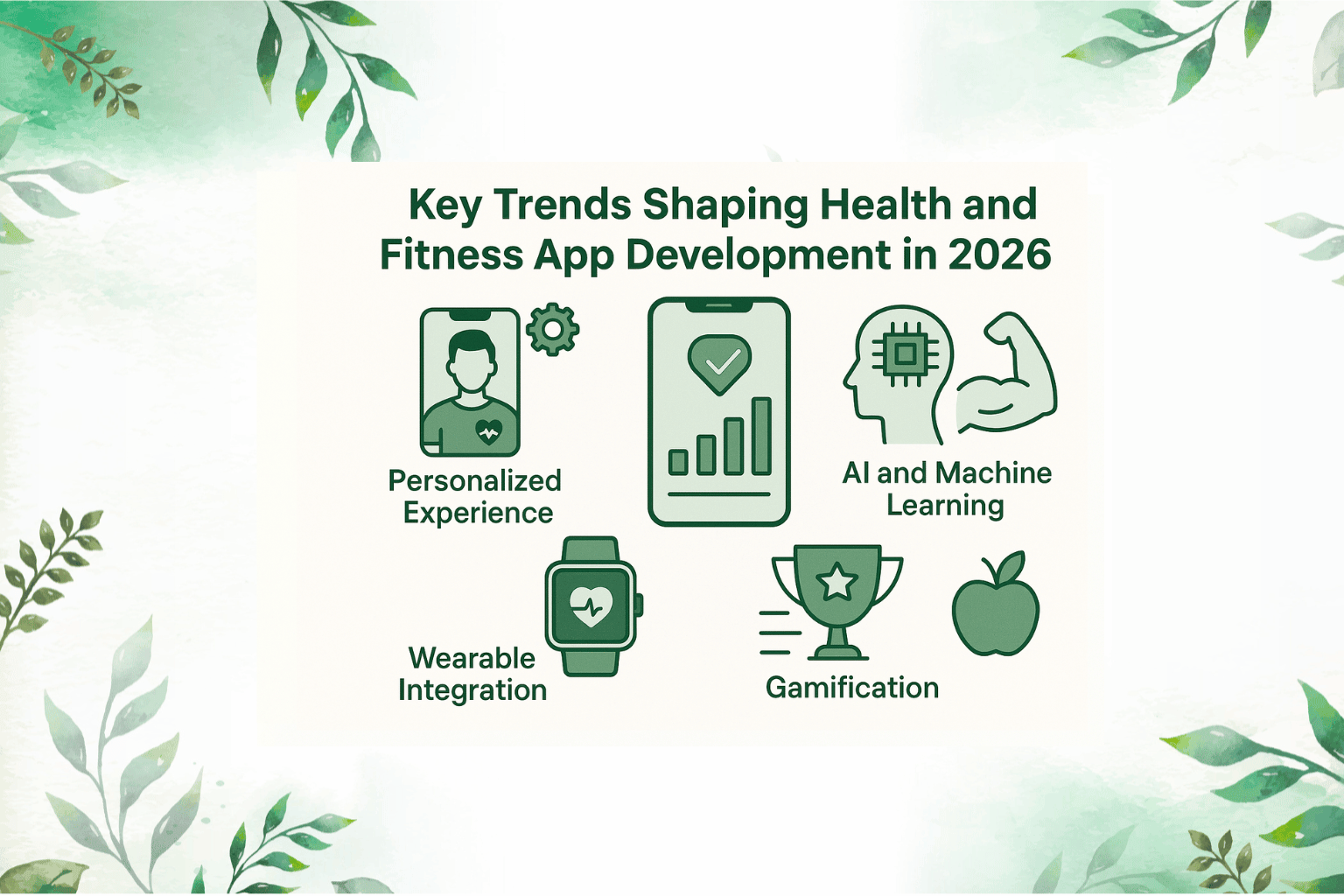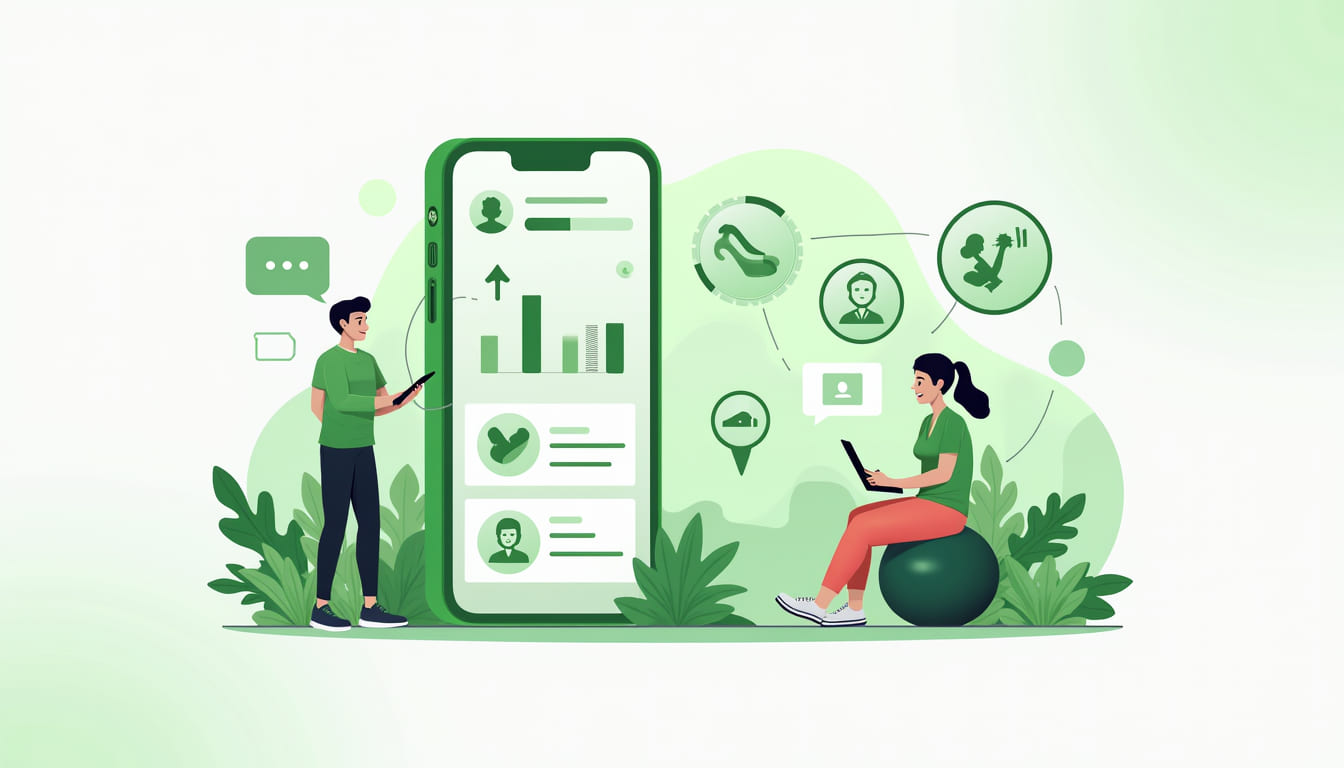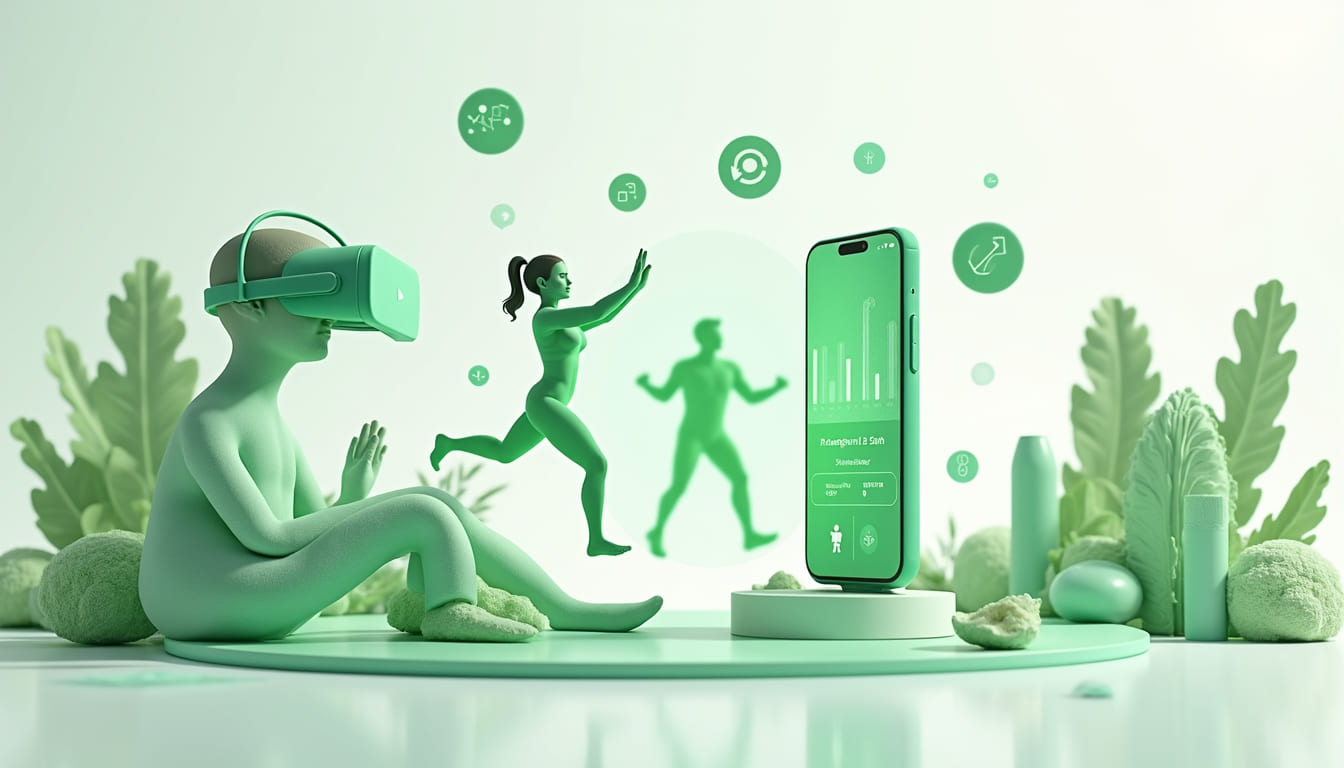
Must-Have Features for Fitness App Development in 2026
Key Trends Shaping Health and Fitness App Development in 2026
2026 is anticipated to be a game-changer for the digital health wellness landscape as health and fitness applications gain traction over lifestyle and healthcare industry. As the users demand more personalized service, they already are witnessing artificial intelligence, telehealth features and wearables integrated on a real-time data-based health app. These days, a fitness app is not just about counting calories or logging workouts, it’s about developing comprehensive platforms that combine preventive treatment, mindfulness practices, healthy eating habits and social interaction.

Health and Fitness app development services companies are building a future where mind & body both can stay fit, in an inclusive manner for seniors, teenagers, professionals or even niche health coddled users. And as more health and fitness app developers master predictive analytics, AI-driven behavior insights and adaptive training modules, a stronger focus will be placed on personalized outcomes. Also, an app on health and fitness research shows that the niche categories along with a plant-based health app, my mobile health app as well as a keep health app are booming, given that consumers want all-round solutions which crossover into lifestyle enhancement. Nowadays, a fitness app development company has to integrate healthcare compliance with secure cloud infrastructure and next-gen UI/UX to satisfy users throughout the world.
Accessibility, inclusivity and engagement are the things that will define what health services look like in future, so, whether it’s a health app for tracking blood pressure through to impressive VR-meets-fitness app experiences – we're just seeing the first wave of consumer innovation. "In the future, there will be more demand for cooperation between health and fitness app developers and medical professionals, which could promote developments in personal wellness." Ultimately, 2026 is more than a year of transition but a tipping point as health and fitness app development company stand in the trenches of establishing themselves as leading architects of digital heath change-makers creating connected, safe and user-centric apps that reach well beyond basic fitness tracking.
1. The Future of Fitness Apps: VR, AR and Immersive technologies on the Horizon
The combination of virtual and Augmented reality changes the way of A health and fitness app. The following is a recent analysis of health and fitness apps as they apply to immersive technologies, and how the future of workouts will be more fun, hands on, and results-oriented. And an app that harnesses AR to optimize health can blast the user’s personal exercises into their space, just as VR tools gamify workouts against boredom. With the growing popularity of travel health apps, individuals are traveling with their own type of portability, maintaining a routine on-the-go.

But technology shortcomings remain; when a health app ceased tracking steps ”we stepped back and said, you know what? This is the scale that people need,” Arne Van Balen commented in an Interview. Another movement is elderly-oriented fitness apps, which focus on reachability and safer low-impact VR exercise. With connectivity, data analytics and immersive fitness experiences converging, the future of the fitness app market will be custom-tailored, with VR-, AR- or mixed-reality supported experiences at their core.
- A VR/AR health and fitness app offers the most immersive workout possible.
- ‘Health & Fitness Apps’ analysis reveals that users seek engagement as opposed to just tracking routines.
- AR-enabled health optimizer app that provides you personalized, real-time training.
- It has a gamification element by using VR to make exercises fun and decrease boredom.
- Travel health apps Supporting users to stay fit while on the road.
- These are the kinds of cases that show we need health apps to be reliable.
- VR/AR brings trust through consistency and correctness.
- Senior fitness apps to use low impact VR exercises for safe wellness.
- Older players benefit from AI and AR tracking for injury prevention.
- VR Fitness elicits fun and social involvement from within VR environments.
- The hybrid apps mixes step tracking and AR coaching together with nutrition guides.
- New apps offer lifestyle support beyond workouts.
- Wearable health devices are changing how people engage with fitness.
- Gamified VR and AR make exercising interactive.
- Ultimately, immersive tech is going to transform the tides of digital health ecosystems.
2. How to develop custom health and fitness apps with AI and ML
AI and ML are completely changing every single health and fitness based app by providing personalized health workout recommendations, predictive analytics tools as well as real-time adaptive tracking of workouts. A recent study demonstrates that personalization still ranks as one of the most important factors for users while retaining an app. AI-powered personalization entails a future health app that can monitor trends in your health metrics and suggest preventive measures before issues get out of hand.
In the classroom, health screening apps for schools are now using AI to monitor student well-being, fitness apps for teen girls use ML to recommend safe and effective age-appropriate workouts. These developments fill the void between general monitoring and specific planning of care. By predicting user progress AI makes itself able to enable apps to establish sustainable lifestyle habits, rather than one-time quick fixes. As developers progress, increasingly more health and fitness applications will serve as custodians of enduring well-being with personalization as the keystone for success in the adoption of health technology.
- Fitness and health app creators are applying AI to customize workouts and meal plans.
- Health and fitness apps analysis: personalization drives engagement and retention.
- Health app trends of the future Prediction monitoring and automated health alerts.
- AI based student health check apps for schools These are the few health screening apps for schools that uses AI to effectively assess student health.
- The best fitness apps for teenage girls, in particular, concentrate on exercising safely, body positivity and keeping track of progress.
- Artificial intelligence makes it possible to make immediate corrections of the posture and position.
- Personal health insights catch preventable chronic diseases early.
- Programs adapt routines to individual user progress with machine learning.
- Better personalization leads to more trust and loyalty from users.
- Health and fitness apps AI also vary in age range, gender caricature, and fitness levels.
3. Gamification and Social Aspects - Driving Engagement in Fitness Apps
User engagement is a key to success for any health and fitness app, gamification have proved to be one of the best tool in it. A Monthlong analysis of health and fitness apps show that reward systems, achievement badges, and leaderboards increase user retention. Social features can be included so that members can follow their progress, challenge and motivate one another which help build a social ecosystem within the fitness app.

Health diary apps with game-like elements encourage users to chart their habits actively, while mental health app designers introduce features that decrease isolation by creating virtual fitness communities. Features such as the best golf fitness app demonstrate how gaming niche elements and sport-specific exercises can add a dose of relevance. The increasing coalescing of gamification with social engagement is not only fun, it's hardcore behaviour modification. Combine the best in storytelling, puzzles and building habits, and you turn boring old exercise into a fun interactive lifestyle solution.
- Reward-based systems enhance adherence to health and fitness apps.
- Review of health and fitness apps demonstrates that gamification increases adherence.
- The health diary app introduces various features that encourage users into habit tracking.
- Community support is facilitated by mental health app developers' collaboration oriented designs.
- Connect to your Facebook friends for friendly competition.
- The best golf fitness app; showing the efficacy of gamification in niche fitness.
- Gamification increases motivation, especially amongst new users.
- Habit streaks and accomplishment milestones are what make the apps addictive in a good way.
- Group involvement supports accountability and growth.
- The idea of incorporating gamification with health monitoring not only creates better user engagement but keeps users interested in maintaining the habit.
4. Combining Menus and Tool (Material)s: Holistic Wellness in Fitness Apps
The health and fitness app has evolved from simply being about exercise to a whole ecosystem of wellness. Health and fitness app analysis demonstrates that stress management, meditation, and exercise in combination results in better user satisfaction. Apps such as react health app and sessions health app are building multi-layered platforms combining therapy tools, breathing practices and physical training. Corporate health apps also lead the charge, allowing for staff health challenges and wellness programs designed to boost productivity — not forgetting morale.
And the tools don’t just chart progress — they strike a balance between practicing mindfulness and looking after your body. When apps integrate features like nutrition tracking along with mindfulness sessions and activity-monitoring software, they are no longer tools we use now and then but rather become life companions. The future of the market is in comprehensive inclusion, where a health and fitness app does not are limited to growing muscle strength but also provide mental peace, emotional balance as well as preventive lifestyle care.
- Health and fitness apps are now focusing on the mind as well as body.
- Study of Health and Fitness apps reveals better retention with comprehensive features.
- Mindfulness meets physical tracking with React health app tools.
- Sessions for mental health app focuses on guided therapy and resilience practices.
- As for the workplace, there are corporate wellness apps.
- Stress management techniques enhance engagement with health apps.
- The mindfulness facets integrate compatibly with the tracking of activity data.
- You can do both nutrition logs and therapy in the same wellness center.
- Better mental health through technology: Integrated digital wellness solutions deliver emotional balance
- Holistic health leads to long-term usage of apps.
5. Security and Privacy Challenges of Fitness Tracker Apps
Health and fitness app users of all stripes are also paying more attention to how their personal health data is stored and shared. Transparency and compliance are king, according to a health and fitness apps study. As we increasingly rely on wearables, there is more sensitive information than ever in apps. A health& safety app built for monitoring a person's vitals would have to meet stringent HIPAA and GDPR requirements. Moreover, initiatives supported by the government such as app state health promotion focus on creating awareness regarding safe usage.

And the increasing dependence on predictive analytics adds new risks if data is not well encrypted. And niche integrations like varsity fitness app for athletic performance testing require additional safety protocols. Developers of health and fitness apps need to rely on secure APIs, strong authentication mechanisms and data governance to overcome such challenges. “In the end, trust can only be earned through continued innovation and a commitment to privacy.”
- Data security should be the most important feature for any health and fitness app.
- There is growing evidence from analysis of health and fitness apps that privacy is a dominant factor among a myriad of consumer consideration.
- Health and safety app data requires HIPAA and GDPR compliance.
- App state health promotion promotes safe tracking awareness.
- Varsity fitting app examples illustrate niche data sensitivity requirements.
- Developers need to use new encryption.
- MFA limits invalid access to the information.
- Secure APIs: personal data is protected by connecting to the secure API.
- It provides audit trails to keep track of the compliance on how fitness information is managed.
- Long-term usage of health and fitness apps relies on building trust.
6. The Revolution in Health and Fitness App Development using AI
AI is taking health and fitness apps to new heights Artificial intelligence has become the poster child of modern health and fitness app innovation. Developers are using such insights to bridge the gap in interaction and employ AI to enhance performance of health and fitness apps. And coming up with flexible workout plans that suits individual needs and conditions, Not to mention nutrition tips recommendations or helping you optimize your nutrition and lifestyle. oplevel AI completely transforms how users interact with fitness technology. Some of the latest solutions, such as the best health wallet apps merge financial health with physical wellness —demonstrating that cross-industry utility is enriching.
It takes a smart, experienced health and fitness app developer to utilize AI for the creation of workout plans that are capable of evolving with user development through time. Social interaction is also on the up, with apps that offer a fitness app with friends, which uses AI to suggest group challenges and competitive targets. The fusion of fitness and machine intelligence is turning apps from static trackers into personal trainers, giving users the confidence to meet their goals, whether they involve simply feeling better or running a marathon.
- Health and fitness app companies smarter routines through AI customization.
- Study of health and fitness apps AI boosts app user retention.
- These are the best health wallet apps Financial and fitness info are on a date!
- App developers in health and fitness train AI models to personalize.
- Predictive analytics identifies health risks before the user knows about it.
- Programs react to their distance from fitness as machine learning avoids.
- AI chatbots direct users with live health advice.
- The social features, such as the fitness app with friends, promote interaction.
- Personalization using AI focuses on various health demographics.
- Apps become digital health coaches, not just passive applications.
Conclusion
Advancements such as AI, immersive tech and holistic wellness integrations are pushing the future of health and fitness app development, along with tighter security. Health and wellness app developers are honing in on the personalization, gamification, mental health support while maintaining compliance with privacy. Based on a health and wellness app report, the need for smart, fun and reliable platforms is going to see an increase. Consequently, fitness apps like these are increasingly becoming our go-to tools when it comes to global health as well as personal well-being.